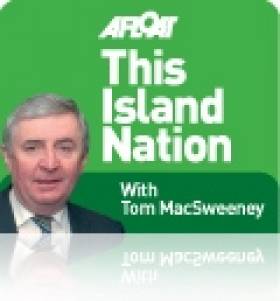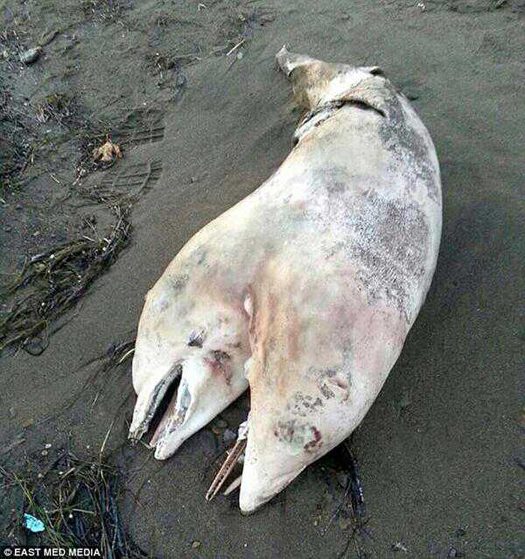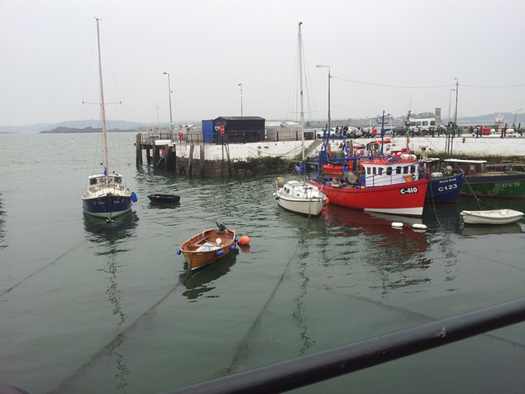Displaying items by tag: National Maritime Museum
Writing Fishing Women Out Of Existence, Ignoring Pirates & Limerick Slave Port
#islandnation – Why is it that women have been written out of the history of the Irish fishing industry and that in Ireland we ignore the economic opportunities which can be obtained from associating with pirates?
Those are two of the fascinating questions which arose at the symposium about the Irish Sea held in the National Maritime Museum in Dun Laoghaire on Saturday.
The "History, Culture, Environment" of the Irish Sea and whether it should be considered a place, a sea, or a connecting corridor of social, economic and trade importance between the people on both sides of the sea, would that seem a topic of general or limited interest to you?
It should be and what emerged during the day-long symposium was fascinating.
For example, they liked their smugglers in Rush in North County Dublin, so much that in the 1800s the Revenue could only get one man to remain in the village for any length of time before he was chased out, as the locals preferred the smugglers. But why, Joe Varley of the Institute asked, when presenting research done by Maighread Ní Murchadha about the Irish Revenue Boatmen from 1684-1766, do we Irish not make more of the opportunities which the maritime history about smugglers now makes available?
"I think we are a bit behind in the way we develop that. You go to Devon and Cornwall there is every escapade, whether real or made up, about smugglers. There are Smugglers' Coves, Smugglers' Inns, festivals about smuggling and they all attract people into the areas, so there is a great commercial potential. So why in the various parts of Ireland where there are smugglers' traditions, is that not used?
"They loved their smugglers in Rush. There were seven Revenue Boatmen in Skerries, seven in Portrane, eight or nine down in Malahide, all around the same area, in the 18th and early 19th centuries, which was the golden age of smuggling, but always just one brave soul in Rush and he wasn't very welcome! Indeed the locals weren't very welcoming to the Revenue generally and used them for their own purposes. In some areas those who operated as smugglers even gave them accommodation in their own homes as lodgers, so they would know when the Revenue were out on patrol and they could time their smuggling for when the Revenue were ashore!"

So, just think of all the opportunities around the coast to benefit from historical smuggling – not mind you the current type we have seen in recent years with drugs smuggling!
In the 18th century Rush (pictured below) was regarded as a "Smugglers' nest." One of the most well-known smugglers from there was Luke Ryan, born locally in 1750. He emigrated to France and obtained a commission as a Lieutenant in Dillon's Irish Regiment. After some time he returned to Rush and began operating as a smuggler between Ireland and France.

From 1775 until 1783 France sympathised with the Americans during the War of Independence and the French government commissioned Ryan as the Commander of a privateer, The Black Prince, which for several years plundered English ships around the English coast. In 1782 English forces captured Ryan and he was convicted in the Old Bailey in London on charges of piracy, smuggling and treason and condemned to death. He had a charmed life, however. Ordered to the gallows four times, four times he was reprieved. At the conclusion of the war, the French intervened on his behalf and secured his release. Unfortunately, his nest egg, some £70, 000, a lot of money at the time and which he had amassed from smuggling and privateering, was appropriated by French bankers. He died in a debtors' prison in 1789, where he was detained for a debt of £200.
Another Rush smuggler was Jack Connor, a native of Wexford, who practised his trade from what was known as 'The Smugglers' Cave,' located between Loughshinney and Skerries. Described as a "romantic and swashbuckling character," he was popular in high society and it was believed his cave held rich treasures taken during smuggling, but that it was guarded by a green serpent. The cave has never been properly located!
WOMEN CARRYING MEN ON THEIR BACKS
The women of the Claddagh in Galway were so powerful physically, that they often met their men at the boats when they came back from fishing and carried the men ashore on their backs, as well as setting the prices for the fish, cleaning and selling them.
"They were big, powerful women, the Claddagh women," Jim McLaughlin, a political geographer and social scientist, who has lectured at UCC for over 25 years, described them when he made the point that it was strange, because the fishing industry depended upon them, that women had been written out of its history.
"In old photographs you can see fish piled up on the pier, the women cutting and filleting them, the men in black suits who were the merchants looking on, ready to buy the fish."
But the women were disregarded as lower-class because they were doing the tough, dirty job of filleting the fish, blood and guts around the place and they were considered a bit wild. So is that where the 'fishwife' derogatory term came from?
"Women who worked in a men's world were considered of dubious background and quality and were crossing barriers. They were treated badly and their story should be told, perhaps starting with the photographs from around the fishing ports, but there is a huge job of research work and I don't see too many people rushing to do it, but women have been badly treated in the history of the fishing industry."
Professor John Brannigan of UCD's School of English, Drama and Film, one of the organisers of the symposium said he was surprised that, as Ireland had such a wonderful maritime heritage, we have no developed sense of studying that history. Maritime history is not an academic subject, whereas in the UK there are well-developed centres of maritime heritage.
"I am curious why that is the situation when people like to live by the sea, there is a clear value commercially from the sea, which is all very important to an island community which we are in Ireland, so there is a vast amount of research work to be done."
On the way back into Dublin on the DART from Dun Laoghaire I could see occasionally the Dublin Bay sailing fleet on the water for Saturday racing. But quite regularly it was cut off from vision by the high walls around the track and at stations. Unfortunate for a railway running alongside the Irish Sea.
TWO-HEADED DOLPHIN
Scientists have not been able to come up with a reason for a dead two-headed dolphin that washed ashore in in Izmir in Turkey, only the fifth known case of conjoined twins in dolphins. The rate of conjoined twins in marine mammals is less than one percent.
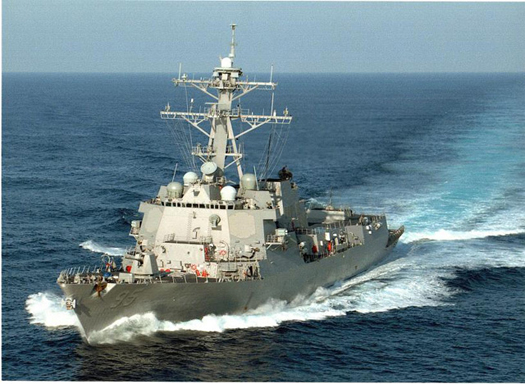
US NAVY SACKS MISSILE DESTROYER OFFICERS
The US Navy is continuing investigations into the situation that emerged aboard its missile destroyer, the USS James E. Williams, part of the 6th Fleet operating with the US Africa Command. The ship's Commanding Officer, Executive Officer and Command Master Chief, effectively the entire command leadership, were fired from their posts in a rare move, while the vessel was at sea, as a result of what has been described as "an on-going climate investigation." The ship departed her homeport of Norfolk on May 30 for an eight-month deployment.
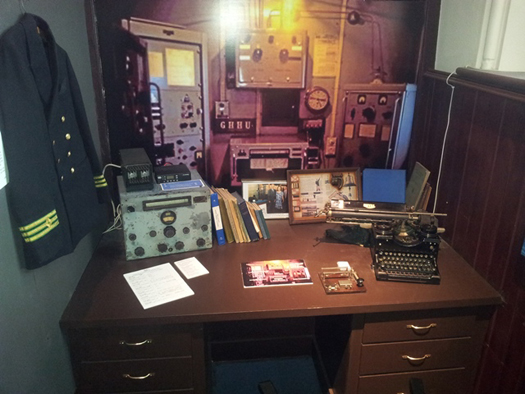
FIRST FOR IRELAND BY RADIO OFFICERS
Since its foundation in 1994, the Radio Officers' Association, for the former 'Sparks' of the sea waves, has grown to 400 members worldwide. For the first time, Ireland has been selected for a re-union of its members. This will take place in Dun Laoghaire on the weekend of November 21/22.
WHAT DO 'YACHTIES' WANT?
Fáilte Ireland is examining the coastal infrastructure in Ireland to find out what the expectations of sailors are. The tourist industry organisation has begun a market research initiative on consumer preferences for sailing, focusing on the infrastructure, facilities and services required to make Ireland a more attractive destination for sailing amongst domestic and overseas sailing enthusiasts.
LIMERICK A SLAVE PORT
While Ireland was never known to have been involved in slaving or having slave ships, research shows that in 1784 Limerick was the first Irish port to attempt to develop a slave-trade company. And in July 1718 a Limerick ship transported 96 slaves from Africa to Barbados, while two Dublin-based ships, the Sylva and the Sophia, were recorded slaving in the Gambia in May 1716. Africans being transported to Jamaica on the Sophia revolted, killing all of the crew except the Captain, according to historical reports.
So, a lot of maritime history this week.... Until next week, the usual wish of .....
"fair sailing..."
Email: [email protected]
Twitter: @AfloatMagazine @Tom MacSweeney
#ChoirFundraiser –Why not come along to the hear excellence from the Ballinteer Male Voice Choir and at the same time raise funds for the National Maritime Museum.
The fundraiser's two hour evening event (between 7.30 -9.30pm) on 22 May will be held in the apt surroundings of the museum in Dun Laoghaire, which was the former Mariners Church.
Founded 20 years ago, the Ballinteer Male Voice Choir has an international reputation and an eclectic programme of male voice classics among them Va Pensiero, The Gendarmes and the Bread of Heaven.
In addition the repertoire has such modern music such as Bridge over Troubled Waters, She was Beautiful as well as Irish Songs arranged by director Ray Ryan and accompanist is Graham Walsh.
Tickets to assist funding the museum are €10 and payable at the door or may be pre-booked at [email protected] or tel: (01) 214 3964
For further details in general about the NMMI visit: www.mariner.ie
Vacancy: Supervisor of National Maritime Museum
#Jobs - The Maritime Institute of Ireland which runs the National Maritime Museum in Dun Laoghaire Co. Dublin, is inviting applications for a Supervisor.
The Institute are looking for suitably qualified candidates with a minimum of FETAC level 6 and three years supervisory experience for the position of Supervisor, National Maritime Museum Community Employment (CE) Scheme.
For further details on how to apply and closing date of receipt for application (Friday 16th May), visit this link.
#SeafoodWineEvent – A mouthwatering seafood cookery demonstration and wine-tasting event extraordinaire takes place at the National Maritime Museum, Dun Laoghaire next week.
The evening event on Thursday 24 April between 7.30-10pm will see Peter Caviston demonstrate the skills to prepare monk fish, crab and other choice fish dishes. Also lending a hand will be Robert Mitchell who will demonstrate the wines that will best complement the food.
For tastings and learning more plus all the craic!... tickets are €10 and proceeds are in support of the National Maritime Museum.
Book early to avoid dissapointment as are there are only a limited number of tickets available!
Booking can be made by email: [email protected] and by contacting the NMMI Tel: (01) 214 3964. For further information in general about the museum and gift shop, opening times and other events visit: www.mariner.ie
#MarineArt - An exhibition of paintings from the collection of National Maritime Museum of Ireland in Dun Laoghaire will be launched by Ian Whyte of Whyte's Fine Art Auctioneers.
The launch is at 7.00 pm on Wednesday 12 March and where light refreshments will be served in the former Mariners Church on Haigh Terrace, close to the Royal Marine Hotel.
Opportunities to see the collection will continue until the end of June and during normal museum opening hours (11am-5pm daily). There is an admission fee of €5, Family €12 and for Children under 12 €3.
Alternatively you can consider becoming a member of the Maritime Institute of Ireland which was founded in 1941 and in which would later establish the maritime museum. The membership entitles you to visit the museum free of charge.
The museum is (mostly) wheelchair accessible and there is a Museum Cafe serving hot snacks. For further information including how to become a volunteer contact: (01) 280 0969 or visit: www.mariner.ie
Contributions Wanted for Maritime Museum Ahead of Re-Opening
#NEWS UPDATE - The National Maritime Museum is set to re-open in March following extensive renovation work, according to The Irish Times.
As previously reported on Afloat.ie, the museum was 'soft' opened to invited groups in October to showcase the developments.
Located in the Mariners’ Church in Dún Laoghaire Harbour, close to the East Pier, exhibits at the museum previously included various marine artefacts and models, as well as a maritime library.
In addition, the new museum will include a section dedicated to marine wildlife, with exhibits on various birds and fish living around the Irish coast.
Hugh O'Rorke is in charge of the marine life section, and is seeking contributions of objects from the public. For more details contact Hugh at [email protected] or 086 372 4676.
T.D.’s to Strut their Stuff in aid of Maritime Museum
The fundraiser event which is in aid of the Development Fund of the museum, is to take place this Thursday evening (8 p.m.) on 10th November, in the National Yacht Club (NYC) along the waterfront of Dun Laoghaire Harbour, close to the East Pier.
Tickets costing €20 are available from the Maritime Institute of Ireland's (M.I.I.) museum office located on the top floor of the Dun Laoghaire Shopping Centre, in local fashion shops and by contacting (01) 214 3964.
At the end of last month, the M.I.I. celebrated its 70th anniversary which was founded in 1941. To read more about the museum which is undergoing renovation and due to re-open in March 2012 click HERE and to read other news and developments visit www.mariner.ie
- National Yacht Club
- Dublin Bay News
- Maritime Institute of Ireland
- Dun Laoghaire Harbour
- M.I.I.
- Richard Boyd Barrett
- nyc
- Dun Laoghaire Harbour News
- National Maritime Museum
- East Pier Dun Laoghaire
- Irish Maritime Museum's
- Independent T.D's
- Luke 'Ming' Flanagan
- Mick Wallace
- Captain Roger's
- Irish T.D's
- Dun Laoghaire Shopping Centre
- Dun Laoghaire Waterfont
- Dublin Bay yacht clubs
A Brighter Future for Dun Laoghaire Maritime Museum
For several years the museum has been closed for vital repair and extensive renovation work. In October the M.I.I. will celebrate their 70th anniversary which will be marked by a 'soft launch' and in the following year the museum is to be officially re-opened in Easter 2012.



























